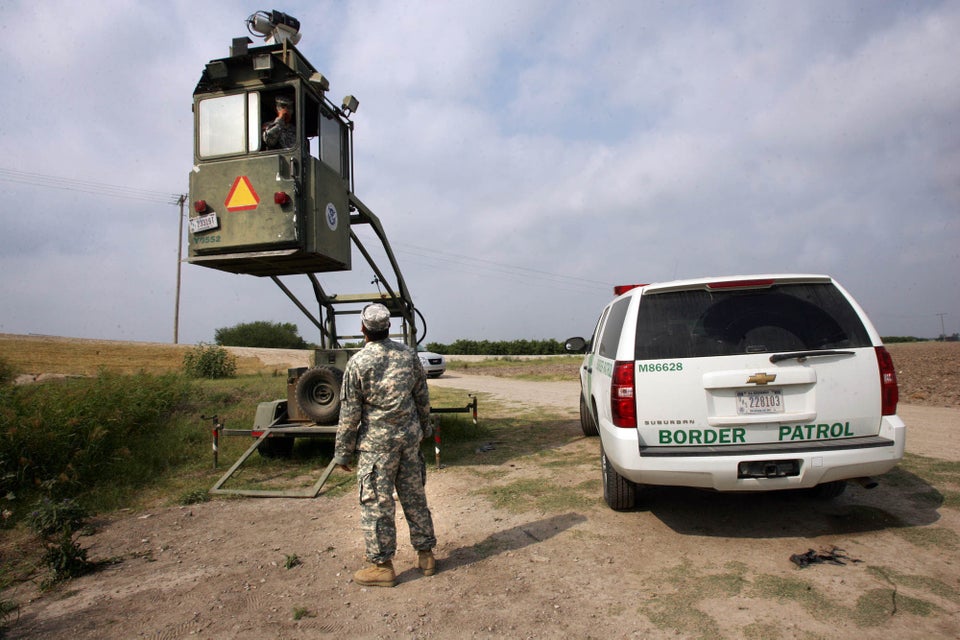Few films bring audiences closer to the brutal reality of U.S. border security than “Who Is Dayani Cristal?”
The beautifully shot documentary, which premieres in New York City on Friday, retraces the steps of a migrant from the town of El Escanito in Honduras, to the Sonora desert in Arizona, where his body was found in August 2010 by border officers and delivered to the Pima County Medical Examiner’s Office.
Mexican actor Gabriel García Bernal lends star power to the film, returning to the migrant’s hometown and narrating his thoughts as he rides in buses and atop train cars on his 2,500-mile journey.
“I’ll never be able to understand the magnitude of the dangers he faced,” García Bernal says in the film. “I can only retrace his steps and see where they take me.”
The idea for the film was born more than five years ago, when director Marc Silver launched a website that solicited ideas for stories of resistance to barriers and walls.
“We saw this really powerful image of the police holding a skull in the desert, and figured this would be a really interesting place to start building a film,” Silver told The Huffington Post.
Over several research trips to Tucson, Arizona, beginning in 2009, Silver got acquainted with Pima County rescuers and Medical Examiner’s Office personnel, who called when they found bodies in the desert so that he could accompany them for filming. It was during one of these shoots that Silver first saw the body of a man with a prayer in his pocket and a tattoo reading “Dayani Cristal.”
The filming overlapped with the passage of Arizona’s law cracking down on illegal immigration, SB 1070. But the documentary generally avoids America's logjammed immigration debate. Instead, Silver said, he wanted it to show how the militarization of the border in the 1990s had pushed migrants into the desert, making crossing into the U.S. deadlier.
“The most dramatic thing I learned -- and it sounds very macabre -- is that when you’re standing there in the morgue looking at multiple, multiple, multiple skeletons, it becomes very apparent that there ain’t much difference between us under the skin,” Silver said.
By reconstructing the migrant's journey, Silver said he hoped to give viewers a better understanding of the larger economic pressures facing those who decide to risk their lives in an effort to find a job in a foreign country committed to expelling them.
“The decisions that are made in places like Washington affect people thousands of miles away,” Silver said. “It’s not just a story of the U.S.-Mexico border. It’s a story that resonates from North Africa, to Indonesia and Australia, where people are dying.”
That sentiment hit home for Robin Reineke, who appears in the film. A doctoral student in anthropology and executive drector of the Colibrí Center for Human Rights in Tucson, Reineke has spent the last eight years helping the Pima County Medical Examiner’s Office identify the remains of those found in the desert by managing a growing database of missing person’s reports. Some 2,238 migrants died in the Arizona desert from 1990 to 2012, according to a report released last year by the University of Arizona's Binational Migration Institute and the Pima County Medical Examiner's Office. About 900 remains have yet to be identified, according to Reineke.
“It’s more complex than preventing people from crossing,” Reineke said. “I think Marc’s film does a good job of showing the real pressures forcing people to leave their homes and their families. People don’t want to leave their homes and walk through the desert to take a job in the United States. They’re doing it for structural economic reasons. NAFTA (the North American Free Trade Agreement) is a key piece of the puzzle here that just isn’t addressed when we’re talking about the border.”
NAFTA had its 20-year anniversary in January. Portrayed by supporters as a way to boost economic growth, the trade deal also helped speed the flow of undocumented immigrants across the U.S.-Mexico border. After the agreement, Mexico saw an estimated 2 million farm workers abandon the fields, displaced by cheap U.S. agricultural imports after tariffs dropped, according to NPR.
The U.S. government responded by clamping down on border security, raising fences and boosting security across urban corridors, according to Reineke.
“What was left was the vast expanse of desert,” Reineke said, noting that on average the Arizona desert sees 165 deaths each year -- up from perhaps a dozen in the early 1990s. “It’s like a medium-sized airplane crash in the desert every year,” Reineke said.
While the subject matter is glum, the film has given Reineke reasons to feel optimistic. Partly because of the spotlight cast on her organization's work through the film, Colibrí has raised additional funding and plans to launch as a nonprofit organization this month.
“We’re very hopeful about the film at the Colibrí Center because we think that it really puts a human lens on the immigration debate,” Reineke said. “Criminalizing migrants allows us to dehumanize them.”
Watch the trailer for “Who Is Dayani Cristal?” above.

